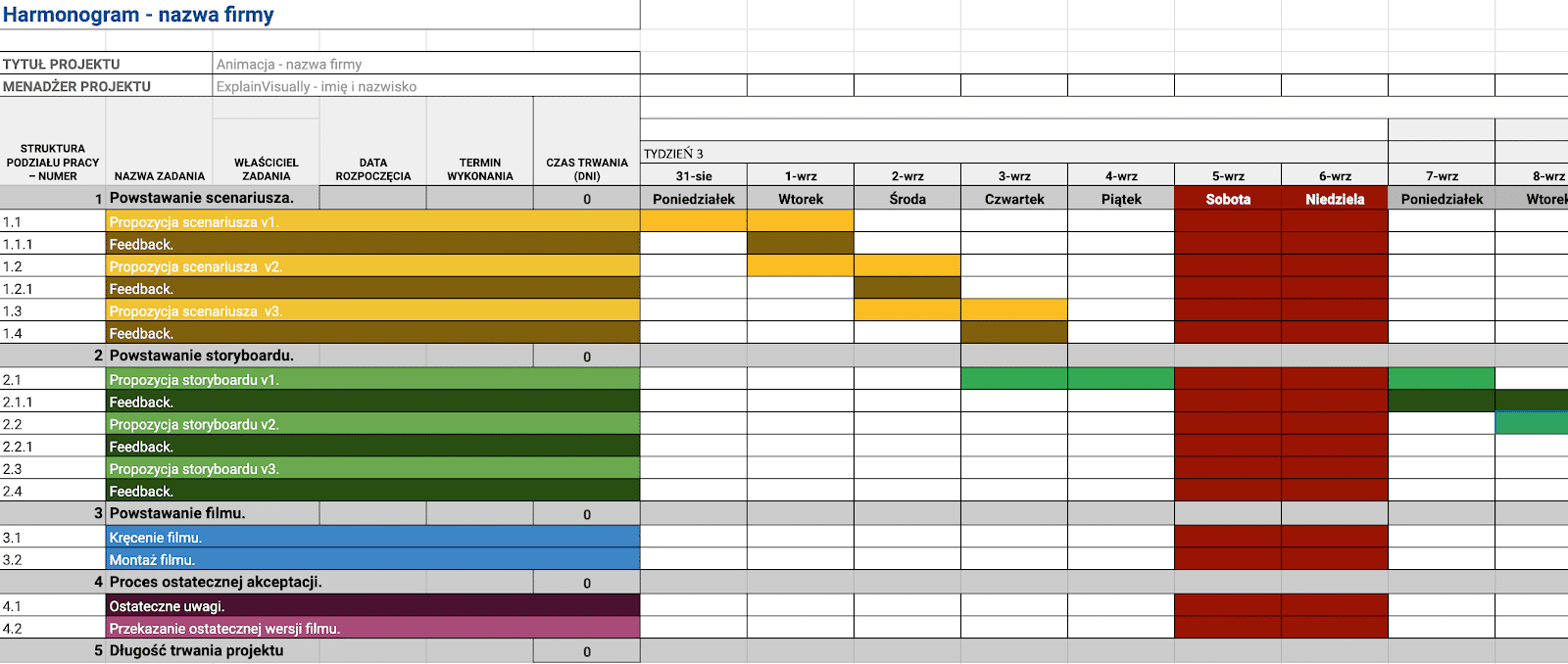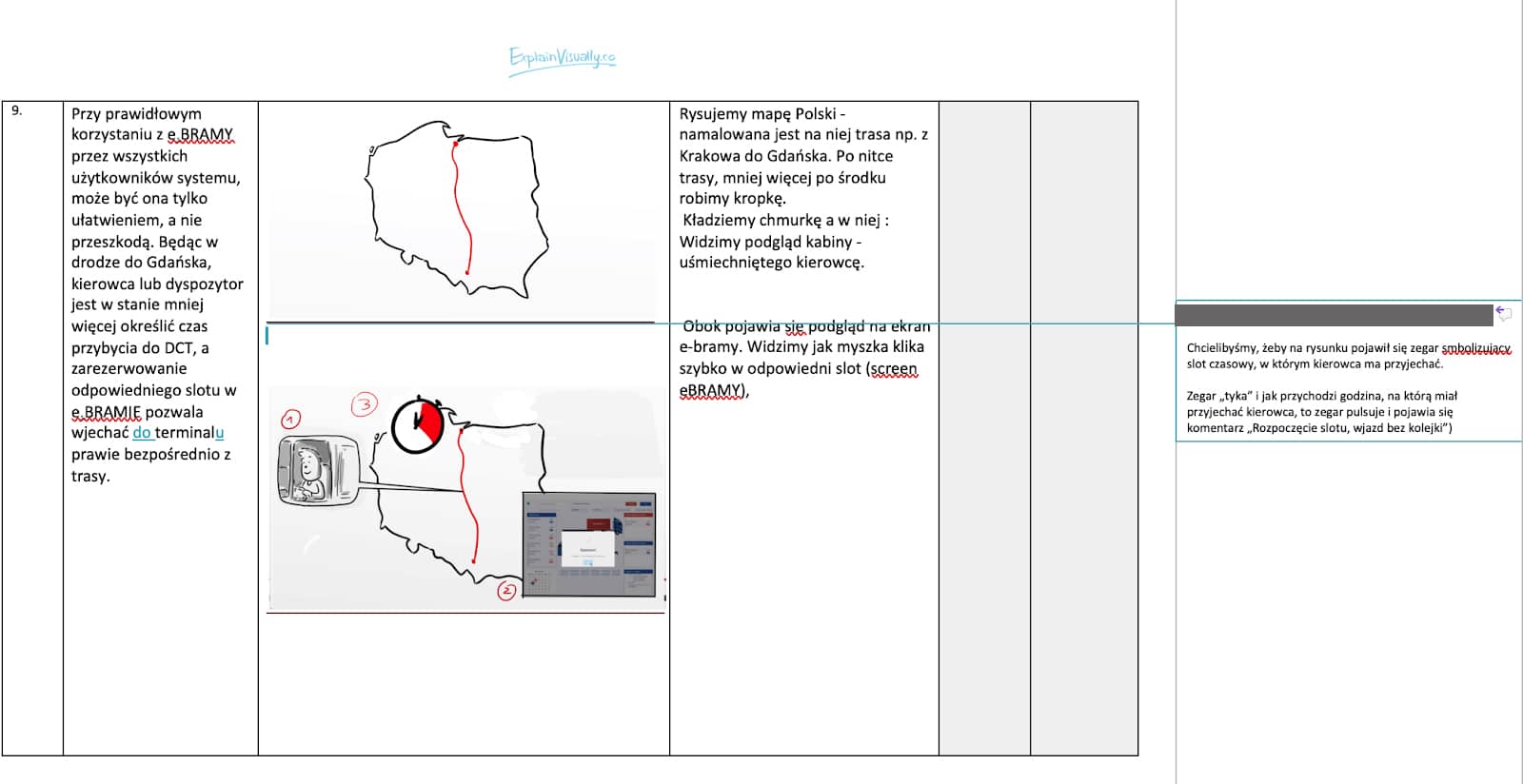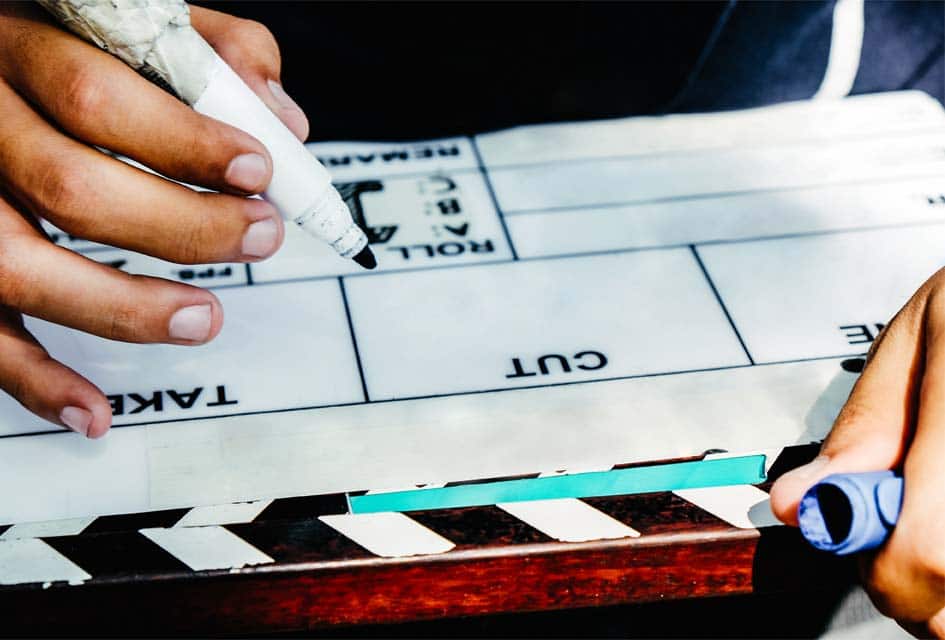You want to commission a explainer video production. It is an important project because you need to talk about a strategic initiative, generate more leads, or implement a new procedure.
You gave the company a general idea and…wait until they hit your vision? This is a serious mistake. One of the 11 most common mistakes made during the production of the explainer.

The chance that the company will hit your vision perfectly is very low. Unless you tell them some details. [1]
That’s why we have created this mini-guide that will help you make your film in a stress-free and organized way.
The 11 tips contained here are based on experience with over 300 projects with several dozen clients. That is why we are convinced that it will be helpful.
#1: Fill in the Brief carefully
Imagine going to the tailor, and telling him that we want a “blue dress.” He will immediately start asking—but what kind? After all, the dress can be short, long, tight, loose, elegant, or sporty.
The more precisely we tell you what goal we want to achieve, what occasion, what we like, and what to avoid, the more accurate his design will be.

Just like there are many kinds of dresses, there are many kinds of explainer video. The accuracy of the result depends on how precisely we define and describe our goal and vision.
The same goes for the production of the explainer video.
The carefully filled Brief collects information about the goal, the context of the project, the target group, the deadlines or examples, and anti-experiences.
In our case, this is a slightly different Brief than usual.
Based on our experience, we created our own Brief, especially for animations.
We send it to clients during the first conversation. If you would like to talk to us about the production, click here.
#2: Collect the material
Although it is the agency that usually realizes the script, it is empty, and even Solomon could not pour from it.
That is why we need information about your project or product to produce an explainer video. They do not have to be nice or interestingly presented—the key is the territory, the so-called “meat.”
Most often the customer sends it in the form of PowerPoint presentations, brochures, or links to websites.

To produce an explainer video you need information about your company, product, or service.
#3: Tell us about all the people involved in the project
Nothing delays the realization of the explainer video (and increases its cost) as much as a decision-maker who at the last stage joins the project and wants to change everything.
That’s why it’s important to know in advance who will want to take part in the animation work.
To be clear, sometimes the CEO is involved in the project, but it’s hard for him to find even a moment to peek at it during the course.
If this is the case, then you can prepare for it. For example, by producing an introductory and slightly less time-consuming version of the film, or adding a few days in the schedule for his comments.
#4: Discuss and accept the schedule
The realization of the project usually looks like it takes a few days for the first draft of the second stage (e.g. storyboard) after the acceptance of a given stage (e.g. a script). This means that comments are needed every 2–3–4 days.
You can see all the specific steps of creating the explainer video here: production of an explainer video
Since there are a lot of steps, you should prepare a schedule.
The project schedule helps both parties to book time in the windows where the materials will appear. It is important to think through this schedule, make changes if necessary, ultimately accept it and try to keep it.
The schedule can take a different form, we usually send it as a table in Excel or Google Sheets.

Sample project schedule
#5: Inform the decision-makers about possible leaves of absence
When scheduling on specific dates, we may discover that there is a holiday or someone else’s vacation. If we create a project schedule for four weeks and it turns out that the decision-maker will not be there for three of them, then we have to arrange it differently.
Such knowledge facilitates a realistic assessment of working time and finding a solution—e.g. sending a final version of each stage to the decision-maker so that he can take a look at it during the vacation.
#6: Add comments in accordance with the guidelines
Usually, animations are made in an iterative mode. This means that first, we have Version no. 1, we apply feedback, Version no. 2 is created, we apply feedback…and then usually to Version no. 3.
It means that a lot of comments are exchanged during production. If a part is given by e-mail, a part by phone, and a part in Word, then the risk of missing something along the way increases. Therefore it is important to collect comments in one place.
If you will have comments on a script or storyboard to give, it is good to do it directly on the file. Most often this means comments in Word.

An example of a comment in a storyboard in Word
If these are comments on the finished film, it will be the easiest to pass them on using the so-called verb. That is the exact minute and second of the movie in which you want to make a change.
Then we avoid misunderstandings from the cycle:
– Change this illustration, so green.
– But which one is five of them.
– The one at the beginning.
– From the first scene?
– Oh, yes, it is green there, too. The second one.

Sample comments to the animation
#7: Gather all comments in a given patch round
Introducing changes requires work and time.
That is why it is important to collect them all at once.
Imagine that we have 10 comments and each of them is given separately, one day apart. This means that it will take at least 10 days to implement them. It is much better if all 10 comments are given at once.
And what about the situation when we sleep with it and a new script idea comes up in the morning? Or when our wife watches the material and notices one thing to improve?
It can be planned so that we don’t break the correction turmoil.
How? It’s good to think in advance about who we want to show the film to and then go to those people for comments. And if we need to sleep with the ideas, it will usually be better to wait one day and send the final comments after waking up (unless the deadline is tomorrow :)).
#8: Keep an eye on the deadlines
Agencies usually carry out several projects simultaneously. This requires good coordination.
If you send comments with a delay, there is a risk that the team has already taken care of another project and has to finish it before it returns to yours.
That is why submitting comments on time is so important.
Of course, life writes different scenarios—sometimes there are delays for reasons beyond our control. Agencies do, too. In such a situation it is important to communicate with each other and tell them what will delay us, and what/how much we intend to do about it.

Creating a schedule and keeping to it avoids delays in the production of the explainer video.
#9: Remember about the key moments
The two most important moments in production are
- Filling in Brief
Because the film is made on this basis. We wrote more about it in point #1.
- Acceptance of the storyboard
Because this is the exact plan of making this film.
Imagine that after watching the first version of Star Wars, George Lucas says that Darth Vader should have not have a black outfit but a white one. This would require the whole movie to be shot again and would generate significant costs for equipment, people, and so on.
Similarly—although on a much smaller scale in terms of time and money, of course—is the case with changes in the animation. That’s why it’s crucial for both parties at the storyboard stage to be sure that they want to implement the concept contained in it.

An example of a storyboard
#10: Get as much as you can during the production
Often the production of an explainer video is an opportunity to rethink products or projects. Employees hearing someone from outside talk about their company’s activities often start to look at their work freshly and generate new ideas.
The production of an explainer video also gives an impulse for talks between departments. During the production of the video and talks with the agency, they can establish a coherent narrative about the product, project, or procedure.
#11: Use your explainer video wherever you can
A film hidden in a drawer will not do much good. There are many options to use it, some of which you can find on our website in “Knowledge database“.
And if we haven’t worked together yet and you would like to find out what it’s like to make an explainer video with us, please contact us: link.
Our explainer videos:

Psychologii uczył się na Uniwersytecie Warszawskim, biznesu na Szkole Głównej Handlowej i Uniwersytecie Cambridge. Podczas studiów psychologicznych badał to, jak ludzie radzą sobie, gdy są przytłoczeni zbyt dużą ilością informacji. To zainspirowało go do budowania przekazów, które tłumaczą złożone rzeczy w prosty sposób. W ramach ExplainVisually realizował projekty dla takich firm jak IKEA, Carlsberg, Orange, Pfizer czy TAURON. Ogromny fan podejścia naukowego, rzetelności oraz budowy marketingu i sprzedaży na solidnych podstawach.


